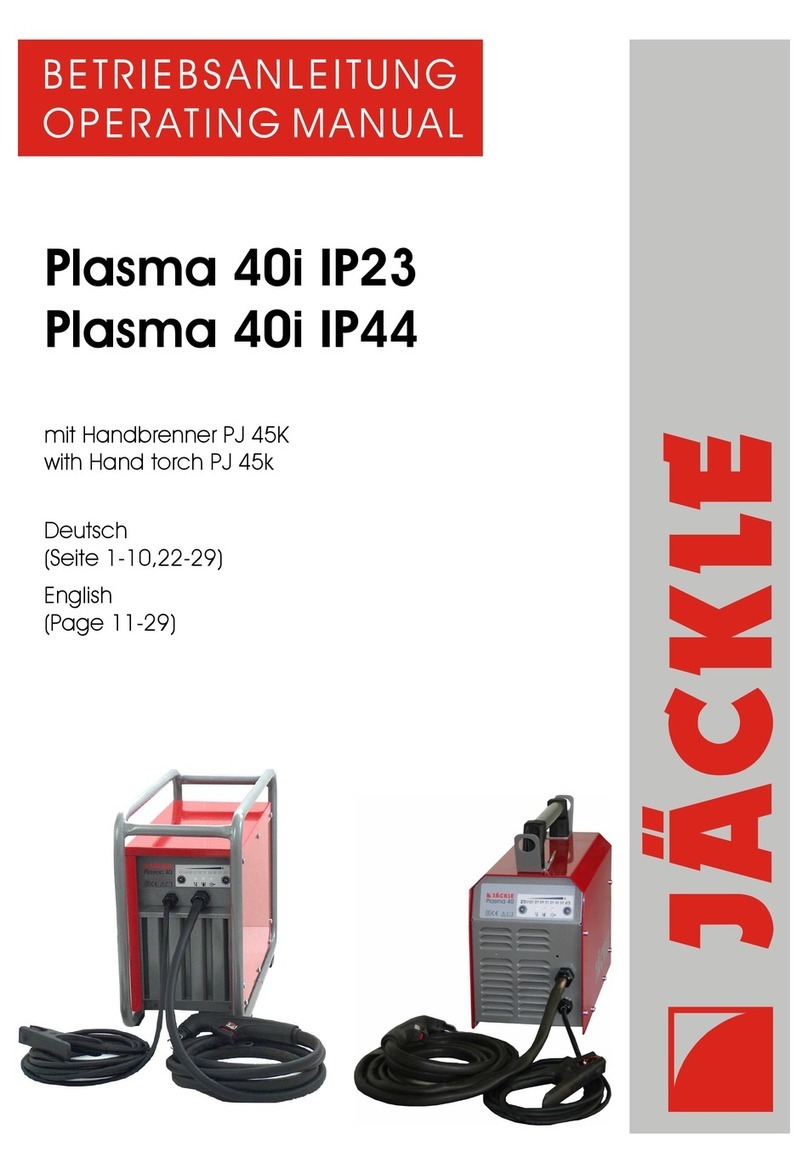Plasma 70 S
Operating Manual Page 3
2.4 Electrical hazard
Plasma cutting is carried out under high-tension conditions which require utmost precau-
tion.
Any defective or damaged parts on the torch must be replaced immediately. When ex-
changing a part, always disconnect the unit (master switch in pos. 0). Only original spare
parts may be used on the torch.
If any insulation damage is found on the hose pack or on the torch head, the operation of
the unit is to be discontinued until the damage has been repaired.
2.5 Further conditions and provisions
Apart from the instructions given in this operating manual, the general safety standards, in
particular the rules for prevention of accidents
BGV A2 (electrical installations and operating supplies) and
BGV D1 (welding, cutting and related working processes).
These rules may be obtained from
Carl Heymanns-Verlag KG (publisher)
Luxemburgerstraße 449
50939 Köln
Furthermore, we point out that in some operative ranges where, despite the observance of
radiation limits, this cutting unit can cause electromagnetic interferences which are the
responsibility of the user.
This means that in the domain of hospitals, for instance, the function of electromedical
units, data-processing equipment and the like (ECG, PC etc.) may be impaired.
Before putting the cutting unit into service, please make sure to inform the authorities in
charge of the above mentioned equipment. If you wish to apply for a special authorization
as provided by the Law on Electromagnetic Compatibility of Technical Equipment, §3
section 4, regarding the use of this cutting unit, please address to your competent
Authority.
If you wish to use the cutting unit in domestic areas, special precautions have to be taken
as well.
Adequate assistance in evaluating the operative range and minimizing electromagnetic
interferences (eg. use of screening lines) may be obtained from the Electromagnetic
Compatibility Standards for Arc Welding Systems.
See EN 50 199, annex A1 and A2.




























